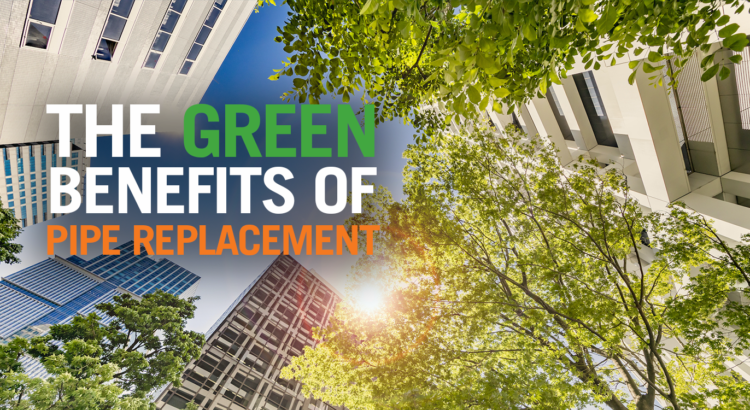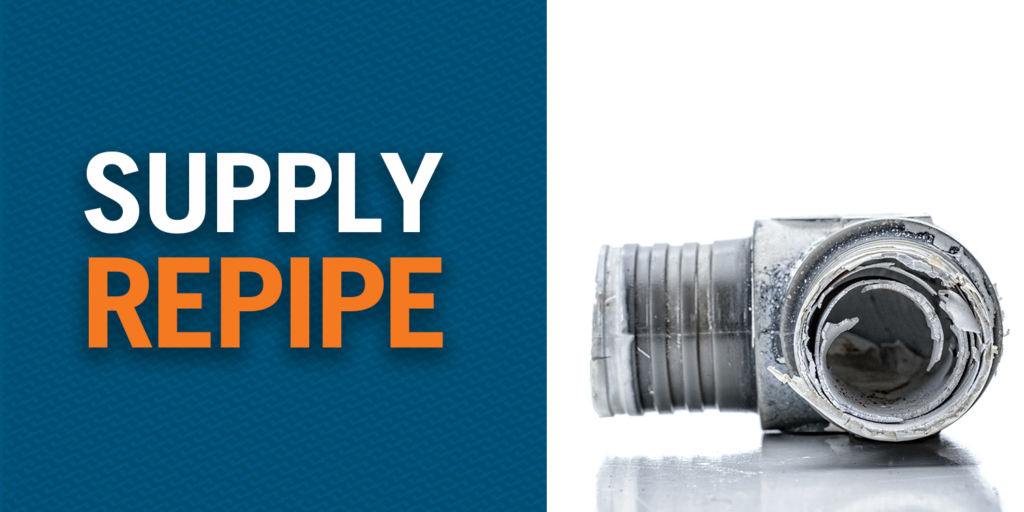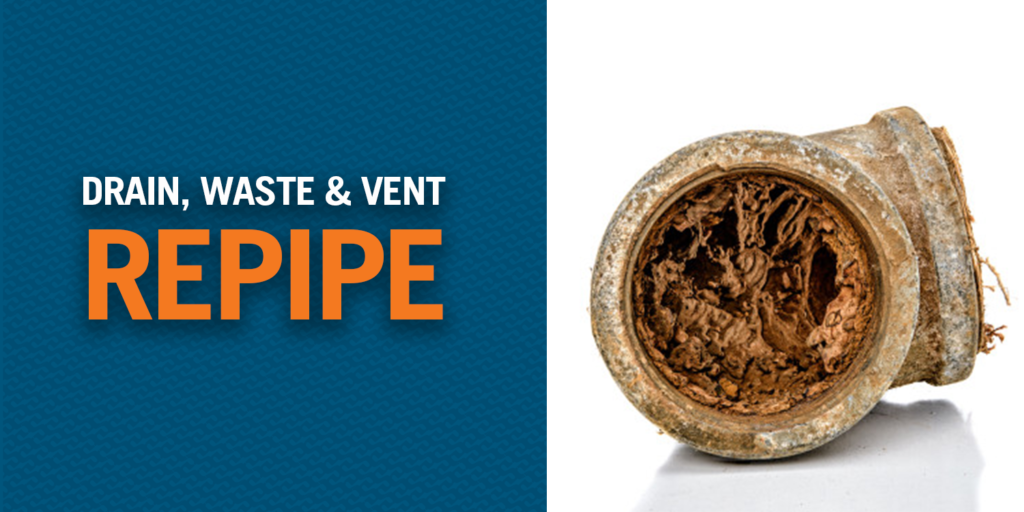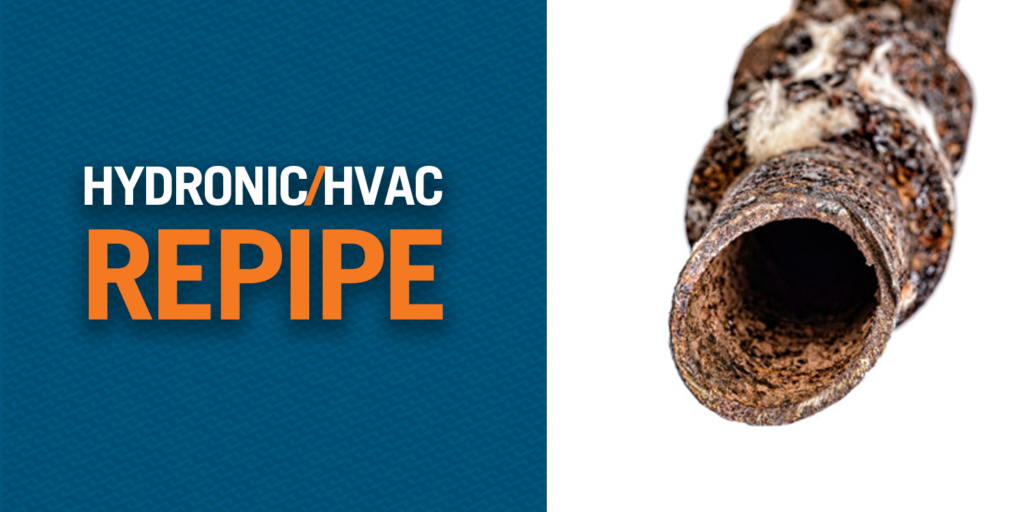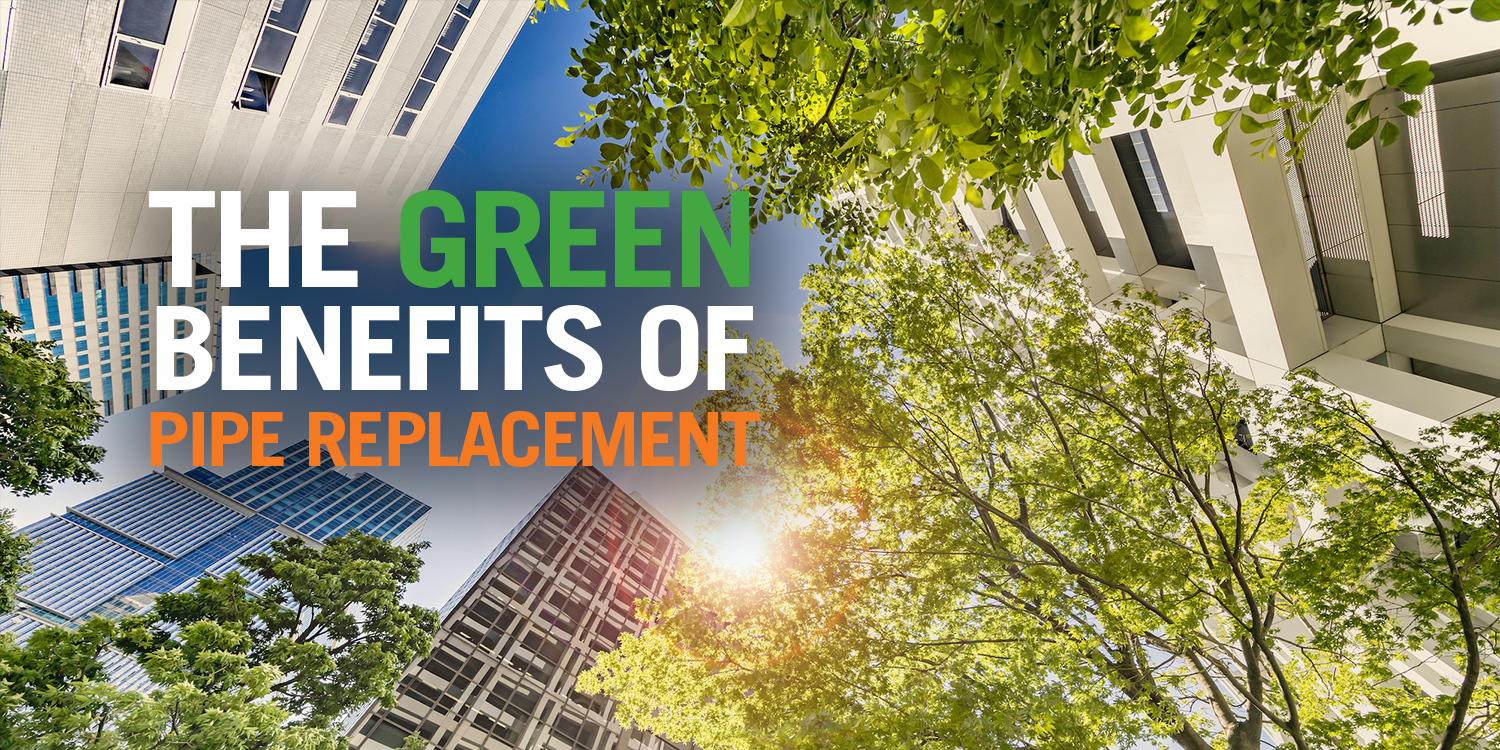
Environmental Benefits of Pipe Replacement
Supply Piping
Replacing failed domestic water systems results in a substantial reduction in water consumption at properties that are experiencing leaks. Depending on how long leaks go undetected, hundreds or even thousands of gallons of water are wasted per leak, and some properties we see have as many as 10-15 leaks DAILY. When replacing domestic water pipe, certain jurisdictions require us to perform code upgrades for various components of the plumbing system to better meet modern standards. These code upgrades often include items like low-flow toilets, which reduce water usage, helping to conserve, and ultimately providing an environmental benefit. Other system components, such as backflow preventers also help ensure the water supply remains safe and uncontaminated. Lastly, when domestic hot water systems are replaced, new boilers or conversion from boilers to water heaters, can have a significant energy savings as modern water heating equipment is typically far more energy efficient than the older systems it is replacing. Lastly, the majority of jurisdictions we work in require us to insulate their hot water piping to current energy code standards. This helps improve overall efficiency of the domestic hot water system, thereby further reducing the energy required to heat and maintain temperature of the hot water serving the community.
Drain, Waste and Vent (DWV) Piping
The main environmental benefit of replacing DWV piping comes from stopping leaks. Leaking sewage is a major hazardous materials issue which is labor intensive and costly to clean up. The more a system back-ups and leaks, the greater the cost (financial and environmental) required to clean it up. In addition, the most common breaks in aging DWV pipe are in the vent lines, meaning methane and other ozone depleting gasses are leaking directly into the atmosphere rather than being treated properly at a wastewater processing plant. Lastly, rain leaders are another component of a properly maintained DWV system, and to the extent that they are failing, improper rain runoff can lead to erosion and soil / runoff control issues at a property, resulting in potential negative environmental impacts. Replacing failing DWV piping ensures all these potential environmental issues are kept in check before they become a problem.
Hydronic Heating and Cooling Piping
Perhaps the biggest “green” benefit comes from re-piping hydronic heating and cooling systems. Replacing leaking hydronic systems results in a substantial reduction in water consumption. Much like domestic water systems, depending on how long leaks go undetected, hundreds or even thousands of gallons of water are wasted per leak. It doesn’t take long to realize how much you can save on your water bill by replacing your pipes if they are leaking regularly. In addition, modern systems operate with much greater efficiency, heating and cooling water by using far less energy than older systems. That productivity, coupled with enhancements in pumping, improved insulation, and more energy efficient terminal equipment means the overall system installed today is significantly more environmentally friendly than older systems. This translates into real world benefits, including reduced operating costs, lower greenhouse gas emissions, a smaller carbon footprint, and more.
Oftentimes, when considering whether or not to replace their pipes, properties will perform a cost benefit analysis. What is it costing to “manage” the leaks versus the cost to repipe? Frequently omitted from that analysis are the financial benefits of implementing a more “green” solution. From rebate programs like the U.S. EPA’s WaterSense Program to better financial incentives (easier access to loans, reduced interest rates, etc.) and other programs like Fannie Mae’s Green Rewards, it is worth exploring what incentives are available that can help offset some of the costs of a repipe. It’s truly a win, win, win: save your pipes, save the environment, and save money… all at the same time!
For more information on the U.S. EPA’s WaterSense program and available rebates, please visit:
https://lookforwatersense.epa.gov/rebates/
For more information on the Fannie Mae’s Green Rewards Program, please visit:
https://multifamily.fanniemae.com/financing-options/specialty-financing/green-rewards

